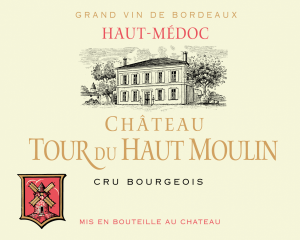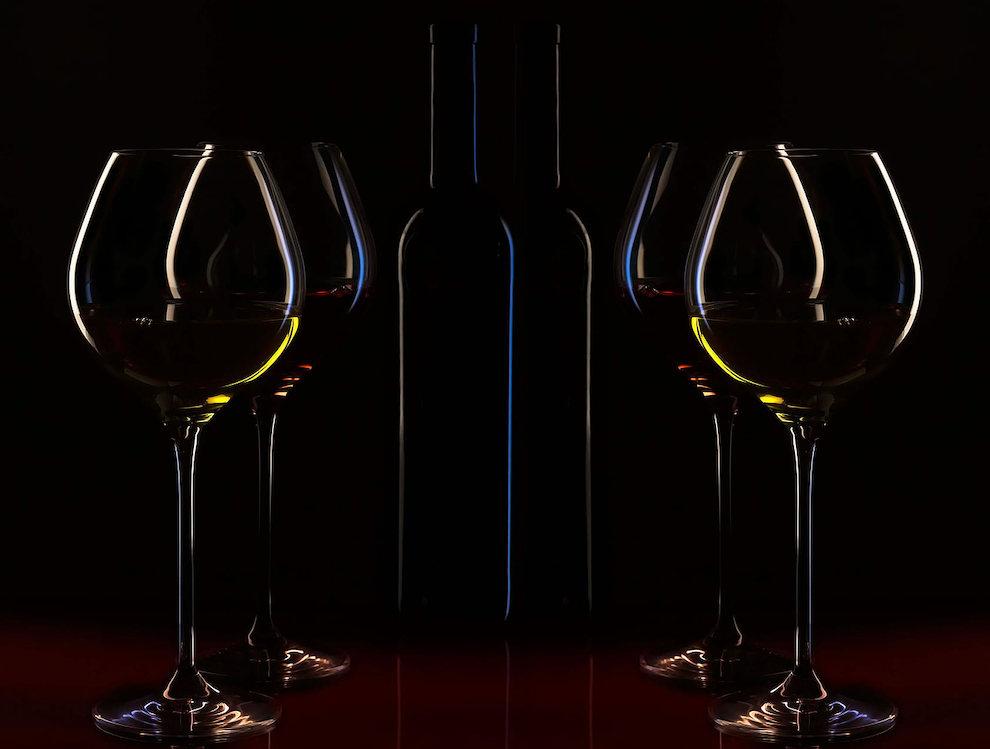There are many great wine regions around the world, but none comes close to the formidable fame of Bordeaux, thanks to the wines featured in its Grands Crus Classés du Médoc en 1855 classification (Bordeaux Wine Official Classification of 1855), which set it apart.
Among all Grands Crus Classés wines, the 5 ranked as Premiers Crus (or ‘First Growths’, the top classification) have become iconic labels for wine consumers. The list includes Château Lafite Rothschild, Château Latour, Château Margaux, Château Haut-Brion and Château Mouton Rothschild. In almost every major city around the world, you will find Michelin-starred fine-dining restaurants and specialist wine merchants carrying some if not all of these wines, as they are synonyms of luxury and prestige.
As its name suggests, the Bordeaux Wine Official Classification of 1855 originated in 1855 for the purpose of showcasing the best French wines during that year’s Exposition Universelle (an international event now known as the World Expo), which was to be held in Paris. At the order of the Emperor Napoleon III, the Bordeaux Chamber of Commerce invited a group of top négociants (a French term for wine merchants) and wine brokers, to draft a list of top wines based on their selling price and reputation.
The list was divided into 5 groups of Grands Crus Classés, descending in order from First Growths to Fifth Growths (or Cinquièmes Crus). In essence, the higher the price of the wines, the higher the grouping granted, as price was regarded at the time as an accurate proxy for quality. (It is an interesting fact that this list took just two weeks to put together, but still has a profound impact on the wine world today.)
With the sole exception of the upgrade of Château Mouton Rothschild to First Growth from Second in 1973, the list basically remains unchanged since 1855. Not surprisingly, there are critics debating if this ranking is still relevant today, pointing to some apparent faults.
First of all, this classification is only a snapshot of the wine market in 1855. Many producers of Grands Crus Classés have since either changed ownership, sold their original vineyards or bought new pieces of land, planted new grape varieties on their properties, modified their winemaking methods, or adopted new production technologies both in the vineyards and wineries.
Secondly, the list only includes winemakers located on the Left Bank of the Bordeaux wine region, excluding those on the Right Bank, which is home to some of the most celebrated Bordeaux wines today, such as Le Pin, Pétrus, Château Lafleur and Château Cheval Blanc. Nonetheless there is no sign of any update to the list or change of the system in the foreseeable future.
There is no doubt that the Grands Crus Classés system is a powerful marketing tool, as consumers are always looking for a guideline or benchmark that they can refer to while making a wine-buying decision. The classification allows the ranked producers to charge a significant premium on their products, regardless of the actual quality of the wines.
This is not to say that the Bordeaux Wine Official Classification has no value whatsoever: there are many producers of Grands Crus Classés who are able to deliver quality wines consistently vintage after vintage and thus justify the fame of their products. But, at the same time, there are wines featured on the list that deserve to be demoted or even removed due to underwhelming quality.
The system simply does not reward those existing Grands Crus Classés producers that have made remarkable improvements and thus warrant promotions, nor does it allow for non-ranked producers that are making great wines today to have their products added to the list. Therefore, for consumers, it is advisable to proceed with caution when referring to the Grands Crus Classés system for a purchase decision, as a higher ranking may or may not reflect the actual quality of a particular wine.
Other rankings
For the Left Bank, there is another, more modern classification system in use: it is called Crus Bourgeois du Médoc. This system, first adopted in 1932, has evolved over time and is open to all wine producers in any of the following appellations d’origine controlee (AOC) in Bordeaux: Médoc, Haut-Médoc, Listrac-Médoc, Moulis-en-Médoc, Margaux, Saint-Julien, Pauillac and Saint-Estèphe.
It is noteworthy that this is the only classification based solely on the results of blind tastings by a panel of judges, with the ranking updated every 5 years. The latest classification results were published in 2020. It featured a total of 249 wine producers ranked according to 3 tiers of quality. In descending order, there were: 14 châteaux in the Cru Bourgeois Exceptionnel category; 56 châteaux classified as Cru Bourgeois Supérieur; and 179 châteaux labelled Cru Bourgeois.
This classification, although less well-known among consumers, is often a helpful reference when searching for affordable quality alternatives to the more expensive Grands Crus Classés.
For wines produced on the Right Bank, there is the Saint-Émilion wine classification system. Châteaux have to apply for inclusion, and their wines from the previous 10 vintages are tasted by a jury of experts. There are 3 tiers of classification (in ascending order in terms of quality): Saint-Émilion Grand Cru Classé, Saint-Émilion Premier Grand Cru Classé, and Saint-Émilion Premier Grand Cru Classé A.
The Saint-Émilion wine classification list is announced once every 10 years. The most recent classification, from 2012, listed 82 producers, with 64 Grands Crus Classés and 18 Premiers Grands Crus Classés, 4 of which obtained the top Saint-Émilion Premier Grand Cru Classé A status.
It is important to note that many wine consumers often confuse the Saint-Émilion Grand Cru Classé ranking with the similarly-named appellation Saint-Émilion Grand Cru AOC. The Saint-Émilion Grand Cru AOC (note that the keyword ‘Classé’ is missing) is merely the name of an appellation in the Saint-Émilion region, having no relationship whatsoever to the Saint-Émilion wine classification system – thus the Saint-Émilion Grand Cru AOC denomination is not in itself a quality indication.
On a final note, keep in mind that Bordeaux is a wine region that is constantly battling with year-to-year variations in weather patterns. It is very useful to refer to vintage charts made available by renowned wine publications in order to differentiate the good years from the mediocre ones, as the quality of the wines can be significantly impacted by poor weather events such as frost and heavy rainfall.
Useful references:
– Full list of the Bordeaux Wine Official Classification of 1855:
https://gcc-1855.fr/ListingGCC1855-en.pdf
– Full list of the Classement 2020 Crus Bourgeois du Médoc:
https://www.crus-bourgeois.com/app/uploads/2020/02/Classement-2020-des-Crus-Bourgeois-du-Me%CC%81doc-1.pdf
– Full list of the 2012 Saint-Émilion wine classification:
https://vins-saint-emilion.com/en/our-wines-2/the-2012-classification/
– Bordeaux vintage charts:
1) By Wine Spectator: https://www.winespectator.com/vintage-charts/region/france
2) By The Wine Advocate: https://www.robertparker.com/resources/vintage-chart
3) By Decanter: https://www.decanter.com/learn/vintage-guides/bordeaux-vintage-guide
This month’s recommendation:

- Name of wine: Château Tour du Haut-Moulin
- Region/country of origin: Haut-Médoc AOC, Bordeaux, France
- Grape variety: Cabernet Sauvignon (50%), Merlot (45%) and Petit Verdot (5%)
- Price: HKD145
- Available at: HK JEBN Limited (https://www.hkjebn.com)
- Official product details: https://tourduhautmoulin.com/?lang=en
- Tasting notes: Aromas of ripe blueberries, blackberries, baking spices, liquorice and a whiff of mint. On the palate, it displays intense flavours of black fruits, including cassis and blackberries, showing a good level of acidity with ripe and structured tannins.
- The verdict: Most consumers cannot afford to enjoy a fine bottle of Grand Cru Classé wine – at least not on a daily basis, as these can be painfully expensive. Alternatively, the Crus Bourgeois du Médoc classification is a good way to find many quality but yet affordable wines. This Crus Bourgeois from the Haut-Médoc subregion is a flavourful and well-structured wine. The 2015 vintage was a good one for the overall Bordeaux region: this wine, albeit a bit young at this stage, will evolve beautifully in a couple years, if well cellared. A wine of this calibre calls for hearty and full-flavoured dishes such as either classic French steak frites, pot roast or game stew. Do not be put off by this wine’s firm tannin structure at a first sip: the wine will ‘open up’ as you swirl it in your glass. If you have a decanter handy, aerating this wine an hour before serving will get the job done as well.
By Mr. Oscar Man Cheng Ho
IFTM Lecturer in Wine Studies
WSET (Level 3) Qualification
Mr. Ho has since an early age been immersed in – and fascinated by – the world of wines. As a child, he was frequently to be found at his family’s restaurant, one of the city’s oldest establishments serving Portuguese fare and, of course, wine. It was only natural that his first job was in the wine trade. Mr. Ho joined IFTM as a lecturer in 2005 and has latterly taught wine-related courses. He also provides training and support to the student-led IFTM Wine Appreciation Club.









